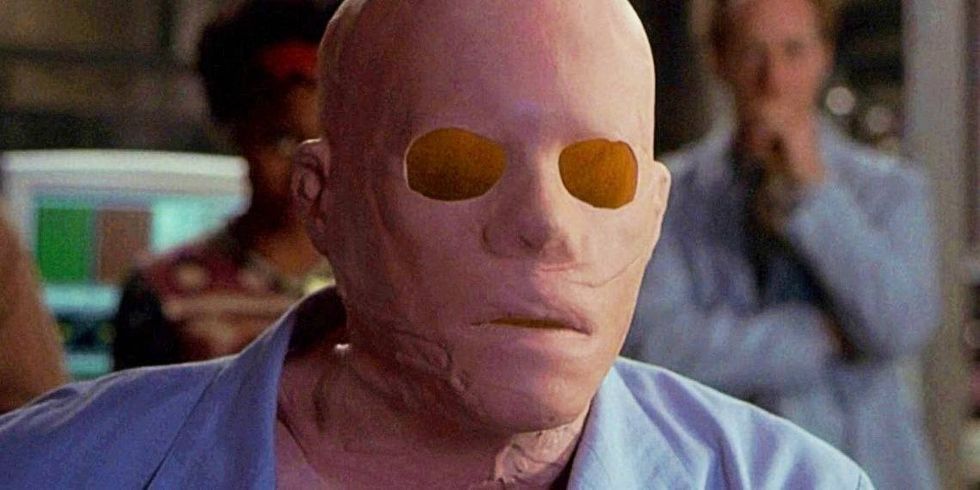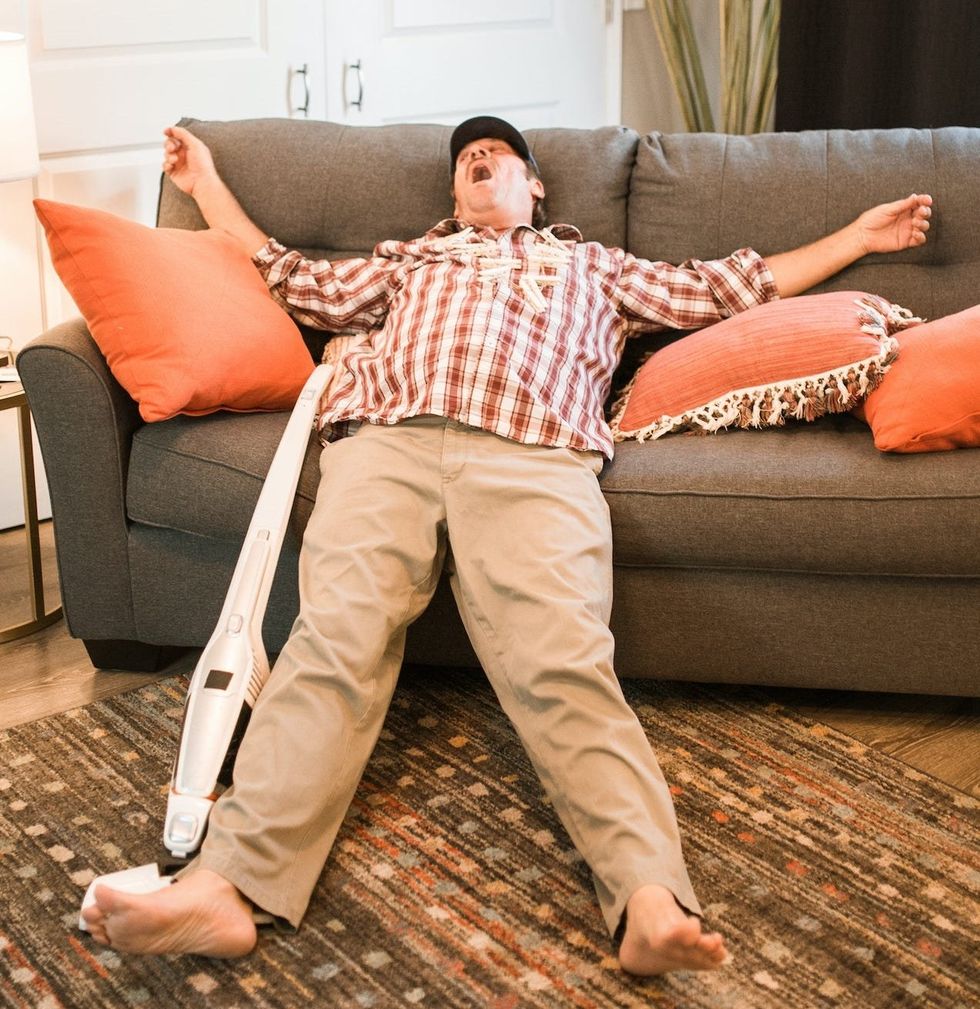As children, we are constantly told to sit up straight. Our mothers would warn that slouching could make us grow up with a hunchback. She would say our bad posture made us look tired and lazy, and she was right. However, good posture is just as important when we're adults.
In fact, the National Posture Institute published an article back in June of 2014 that talked about all the ways our posture directly effects our overall health. As it turns out, the way we sit or stand has more to do with how well we live and less to do with how good we look, although proper posture can improve a person's appearance tremendously.
According to that publication, bad posture can cause the following:
- Increased risk of digestive problems, including:
- Heartburn
- Indigestion
- Constipation
- Gas
- Decreased lung capacity, which might involve:
- Shortness of breath
- Dizziness
- Appearance of weight gain
- Dental issues
- Headaches
- Unbalanced hormone levels
While those side effects of bad posture may sound serious enough as it is, the fact of the matter is simple (and surprising): improper posture can cause long-term health problems. Moreover, sitting and standing the wrong way even can get you hurt. The American Posture Institute agrees, finding recently that bad posture is a leading cause of falls and injuries, especially among the elderly.
What Is Posture?
Put simply, "posture" is defined as the position in which your body is sitting or standing at any given time. Whether static or dynamic (a.k.a. sitting still or in motion), a person always has a posture. Furthermore, whether that person has good posture or bad posture depends on a variety of factors. While poor posture can be the result of a birth defect or injury, most improper posture is strictly habit.
According to most chiropractic experts, there are four main types of posture to consider:
1. Standing Posture
Standing correctly involves making sure your ears are in line with your shoulders, hips and ankles.
2. Laying Posture
The American Chiropractic Association says that lying down correctly involves keeping the cervical spine in a neutral position by using the right pillow and not sleeping on your stomach.
3. Sitting Posture
Proper posture while sitting includes keeping your knees bent at a 90-degree angle with your feet hip-width apart. Also, your spine should be erect with your shoulders rolled down and back.
4. Exercising Posture
The type of posture deemed correct for workouts is based on the kind of exercise being done. Talk to a personal trainer for more information about equipment-specific postures, as incorrect usage can cause serious injury.
The Connection Between Posture and Health
It has long been accepted that bad posture can make a person look less alert and feel less comfortable. However, it wasn't until the last couple decades that scientists understood the direct correlation between posture and health. Now, scientists are saying that bad posture can actually kill you:
"Older men and women with (bad) posture have higher mortality rates [than those who don't]." – Journal of American Geriatrics Society, 2004.
What this suggests is that all the dieting and exercise in the world cannot help someone whose posture isn't correct, especially as they age. Whether we live healthy lifestyles is not the question. According to research, our posture has as much baring on the quality of our lives as the activities we participate in and the foods we eat.
The reason posture has such a significant effect on a person's overall health is best understood from a musculoskeletal perspective. The part of the body that's not being adequately supported will likely be the area in which the negative side effects are noticed. For example, a person who slouches may experience shortness of breath or fatigue due to decreased lung capacity.
While being unable to take full breaths may seem like a simple problem, most poor posture is done out of habit and is thus habitual. Unfortunately, habitually limiting the quality of one's oxygen intake can have many serious consequences, including:
- Decreased cognitive function
- Increased blood pressure
- Confusion
- Inflammation
- Impaired metabolic function
- Loss of vision
- Reduced stamina
- Chronic back/joint pain
- Decreased life expectancy, typically due to:
- Increased risk of heart attack
- Increased risk of stroke
Keep in mind that decreased lung capacity due to bad posture is only a small piece to a much bigger, more alarming puzzle. The resulting long-term digestive problems, debilitating headaches, dental issues, and hormonal imbalances can have life-threatening side effects as well.
The main idea is this: poor posture can cause significant back and joint pain, not to mention chest depression – a side effect that can decrease the amount of space available for organs in the abdominal and thoracic cavities. Unfortunately, this decrease of space creates an automatic increase in pressure. As a result, most health problems stemming from bad posture are due to that intensification of internal compression.
5 Tips to Improve Your Posture
According to experts at Harvard Medical School, good posture means the following:
1. Keep Your Spine in a Neutral Position
Good posture doesn't mean standing at attention like a soldier. It simply means keeping your spine in a neutral position. In other words, don't overly arch or flex the curve in your lower back.
2. Make Sure Your Core Muscles Are Strong
Strong core muscles are important for maintaining proper posture even when you're relaxed. Once the right posture is achieved, brace your abdominal muscles to hold it in place.
3. Have Regular Chiropractic Adjustments
Chances are, you've already done significant harm to your body because of bad posture. Most chiropractor Juneau is trained to make the necessary adjustments, giving you a clean and perfectly aligned slate while helping to heal any existing damage.
4. Position Your Chin Parallel to the Floor
No matter what you're doing, try to keep your chin in line with the floor. This will force the other parts of your body to automatically align.
5. Distribute Body Weight onto Both Feet
By keeping your weight evenly distributed between both feet, you reduce the amount of pressure on other parts of your body and limit the temptation to have bad posture.





 Going to the cinema alone is good for your mental health, says science
Going to the cinema alone is good for your mental health, says science












 women in street dancing
Photo by
women in street dancing
Photo by  man and woman standing in front of louver door
Photo by
man and woman standing in front of louver door
Photo by  man in black t-shirt holding coca cola bottle
Photo by
man in black t-shirt holding coca cola bottle
Photo by  red and white coca cola signage
Photo by
red and white coca cola signage
Photo by  man holding luggage photo
Photo by
man holding luggage photo
Photo by  topless boy in blue denim jeans riding red bicycle during daytime
Photo by
topless boy in blue denim jeans riding red bicycle during daytime
Photo by  trust spelled with wooden letter blocks on a table
Photo by
trust spelled with wooden letter blocks on a table
Photo by  Everyone is Welcome signage
Photo by
Everyone is Welcome signage
Photo by  man with cap and background with red and pink wall l
Photo by
man with cap and background with red and pink wall l
Photo by  difficult roads lead to beautiful destinations desk decor
Photo by
difficult roads lead to beautiful destinations desk decor
Photo by  photography of woman pointing her finger near an man
Photo by
photography of woman pointing her finger near an man
Photo by  closeup photography of woman smiling
Photo by
closeup photography of woman smiling
Photo by  a man doing a trick on a skateboard
Photo by
a man doing a trick on a skateboard
Photo by  two men
two men  running man on bridge
Photo by
running man on bridge
Photo by  orange white and black bag
Photo by
orange white and black bag
Photo by  girl sitting on gray rocks
Photo by
girl sitting on gray rocks
Photo by  assorted-color painted wall with painting materials
Photo by
assorted-color painted wall with painting materials
Photo by  three women sitting on brown wooden bench
Photo by
three women sitting on brown wooden bench
Photo by 
 Photo by
Photo by  Photo by
Photo by  Photo by
Photo by  Photo by
Photo by 


 people sitting on chair in front of computer
people sitting on chair in front of computer









